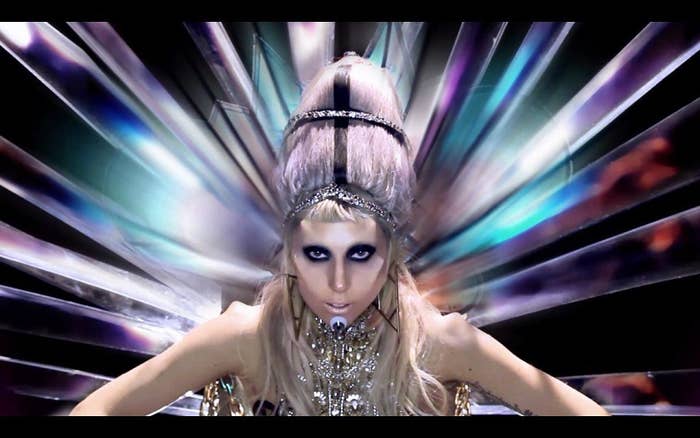1. A feminist identity consists of wanting equal social, political, and economic rights for all women.
View this video on YouTube
Core feminist beliefs do not include the inherent hatred of men. Contrary to popular belief, males can identify as feminists as well. In his essay "Other Men," John Stoltenberg reflects on his feelings of masculine inadequacy and subsequent isolation, due to his association with the radical feminist movement. For Stoltenberg, feminism allowed him to understand the need for a “gender-just future,” where assisting in the liberation of woman kind would assist in the deliverance of men from stifling assumptions about how masculinity should be experienced (167). Under a patriarchal system, a brotherhood is rampant that embraces men “on account of their being men” that completely ignores the interests and autonomy of women. Stoltenberg calls more men to cast aside what they know about feminism, and most importantly to shed the illusion of “masculine complacency.” Despite her anger at the double standards found in pop music’s representation of women, Lady Gaga outright denounces being a feminist in the interview above. Perhaps at that moment in time Gaga misunderstood that feminism does not necessarily require man hate, and works to defend all women, even the “strong women that speak their minds” that she so admires. For true feminism to succeed, males and individuals of all identities must be included.
Stoltenberg, John. "Other Men"
http://www.xyonline.net/sites/default/files/Stoltenberg,%20Refusing%20to%20Be%20a%20Man.pdf
3. Notions of femininity are heavily constructed and are allowed to be monstrous.

4. The feminine is also allowed to fight back.
View this video on YouTube
In the Bad Romance music video, Gaga is forcibly taken and sold into what is insinuated as sexual slavery. She is placed on display in front of a male audience and is decorated in various jeweled outfits to acquire the highest bidder. Towards the video’s end we see the man who has purchased her in ashes, while Gaga lays next to him with a pyrotechnic bra. Gaga uses her feminine wiles to free herself from male constraints, one that in antiquity used “women as a medium of exchange” and still commodifies the female body. In the second chapter of The Freudian Mystique, titled "Magic, the Fear of Women and the Patriarchy," Samuel Slipp identifies the origins of the patriarchy, and the male fear of untapped female power. As aforementioned, the association of the female with the destructive and creative powers of nature is what largely caused the fear of women and their sexuality. Slipp describes early goddess cultures, where women were simultaneously controlled and feared for their magical capabilities and denied access to social power. In their eyes, to sublimate women was to guarantee social stability. Gaga’s use of femme fatale imagery is an update of these notions, where femininity can ultimate defend itself if need be.
Slipp, Samuel. "Magic, the Fear of Women and the Patriarchy." 1993
5. Gender is performative, AKA something you can "put on" and exaggerate.

8. Does this double standard have religious origins?

9. Bisexuality is not a myth.
View this video on YouTube
“Poker Face” was originally written from the perspective of a person dealing with their bisexuality. The lyrics alternate between addressing a male and female lover, he can’t read my poker face/she’s got me like nobody. The speaker is with a male, but fantasizing about a female. A poker face consists of having a blank facial expression to preserve one’s true emotions. Gaga’s real life experiences as a bisexual have unsurprisingly been met with denial, causing her to speak publicly on the matter: “anyone that wants to twist this into 'she says she's bisexual for marketing,' this is a…lie. This is who I am and who I have always been." Alarie and Gaudet explain why similar accounts of bi-erasure occurs in “I Don't Know If She Is Bisexual or If She Just Wants to Get Attention.” According to their findings, bisexuality is treated as a myth, an impossible sexual identity that is utilized by individuals as a ploy for controversy and attention from others. Bisexuals are associated with ideas of promiscuity, as individuals who refuse to “pick a side,” or monosexual identity. Through “Poker Face” Gaga discusses the suppression of her bisexuality and placed the orientation in the realm of discussion.
Alarie, Milaine and Gaudet, Stéphanie. “I Don't Know If She Is Bisexual or If She Just Wants to Get Attention.” 2013.
http://www.tandfonline.com/doi/full/10.1080/15299716.2013.780004#.U-LURfldWbQ
10. Female liberation goes hand in hand with LGBTQ acceptance.
View this video on YouTube
Even as an openly bisexual woman, many were surprised when Lady Gaga decided to speak at the National Equality March in 2009. She directly addressed President Obama and promised to fight against inflammatory homophobic and misogyny behavior in the music industry. By pledging this, Gaga reinforces that notions of gender are heavily tied to how we perceive sexuality. For liberation to progress in society, true solidarity must be achieved. In "Transgender Liberation," Leslie Feinberg documents how the transgender movement has been perceived historically, and what steps can be taken to take the movement further. Feinberg states that solidarity entails understanding how and why oppression is rampant and who exactly benefits from it. This also means comprehending opposing points of view and individual experiences and applying intersectionality when possible. As Gaga suggests, feminism and LGBTQ liberation would benefit by working towards similar goals.
Feinberg, Leslie. "Transgender Liberation." 2006.
https://ares.uflib.ufl.edu/ares/ares.dll?SessionID=L161637843I&Action=10&Type=10&Value=138284





